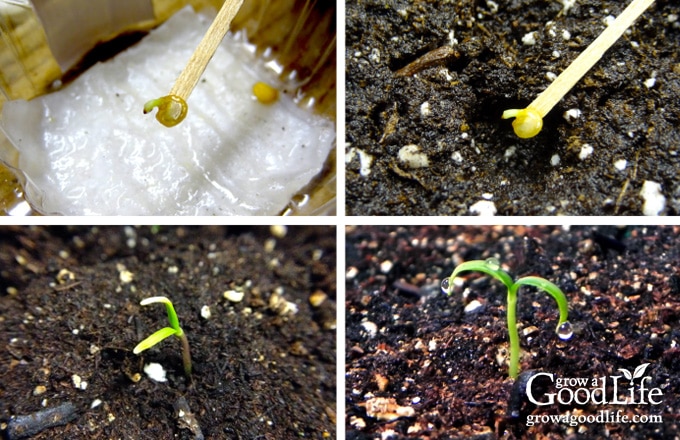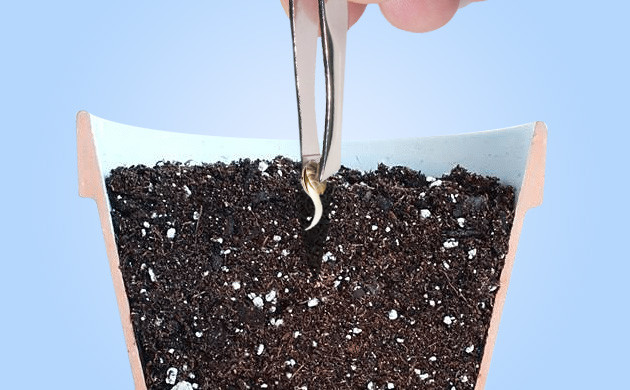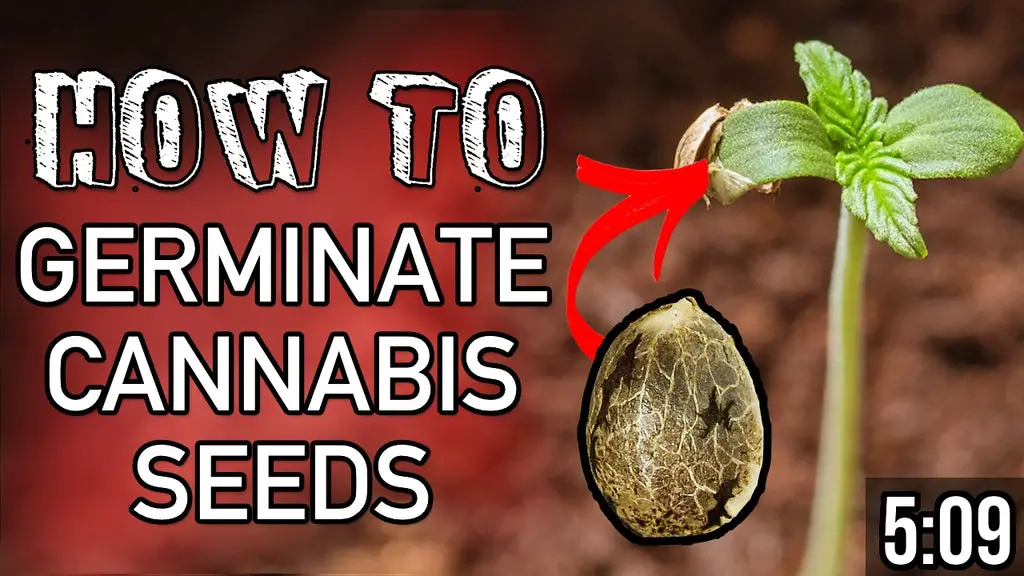Planting pot seeds can be a fun and rewarding experience. Many people enjoy growing their own plants from seeds.
But what is the best way to do it? Starting with the right method can make a huge difference. Proper planting techniques ensure healthy growth and a bountiful harvest. Whether you are a beginner or an experienced gardener, understanding the best practices is essential.
In this guide, we will explore the most effective ways to plant pot seeds. You’ll learn about choosing the right soil, the best potting techniques, and how to care for your seeds as they grow. Let’s dive in and discover the secrets to successful pot seed planting!
Selecting The Right Seeds
Choosing high-quality seeds is essential for successful pot planting. Select seeds from a trusted source. Ensure they are suitable for your climate.
Choosing Quality Seeds
Always buy seeds from a trusted source. This ensures good quality. Check the seed packaging date. Fresh seeds germinate better. Avoid old or damaged seeds. They might not grow well. Look for organic seeds. They grow naturally and are healthier.
Varieties To Consider
Different seeds offer different benefits. Some grow faster. Others produce more flowers. Choose a type that suits your needs. Common types include Sativa, Indica, and Hybrid. Sativa seeds grow tall and thin. Indica seeds are short and bushy. Hybrid seeds combine traits of both.
Preparing The Soil
Preparing the soil is essential for planting pot seeds. Loosen the soil and remove any debris to ensure proper growth.
Soil Composition
Good soil helps seeds grow strong. Loamy soil works best. It has sand, silt, and clay. Sandy soil drains well but lacks nutrients. Clay soil holds water but drains poorly. Mixing them can create balanced soil. Adding organic matter like compost improves soil. It boosts water retention and nutrient levels.
Nutrient Requirements
Plants need macronutrients like nitrogen, phosphorus, and potassium. Nitrogen helps leaves grow. Phosphorus aids root development. Potassium strengthens plants. Micronutrients like iron, zinc, and magnesium are also important. They support overall plant health. Soil tests help determine nutrient levels. Adding fertilizers can balance the soil.
Germination Process
Planting pot seeds is simple with proper germination. Place seeds between moist paper towels in a warm spot. After sprouting, transfer to soil.
Soaking Seeds
Soak seeds in water for 12 to 24 hours. This helps seeds absorb water. It also softens the shell. Use room temperature water. Avoid using hot or cold water. After soaking, seeds will be ready for planting. Be gentle with the seeds. Handle them with care.
Ideal Temperature
Maintain a temperature of 70 to 80 degrees Fahrenheit. This is the best range for germination. Use a thermometer to check the temperature. Keep the seeds warm but not hot. Avoid placing them in direct sunlight. This can cause overheating. Proper temperature ensures healthy growth.
Planting Techniques
Plant pot seeds at the right depth. Usually, 1/4 inch deep is best. Each seed needs room to grow. Space them 1 inch apart. This helps roots grow strong. Strong roots mean healthy plants.
Water the seeds gently. Too much water can wash them away. Keep the soil moist. Not too dry, not too wet. Check the soil every day. Water when the top feels dry.
Caring For Seedlings
Seedlings need plenty of light. Place them near a sunny window. If there isn’t enough natural light, use a grow light. Seedlings need 12-16 hours of light each day. Too much light can harm them, so be careful. Watch for signs of too little light. Seedlings will stretch and look weak.
Watering seedlings is very important. Moist soil helps them grow well. Do not let the soil dry out. Overwatering is bad too. It can rot the roots. Check the soil daily. Water when the top layer feels dry. Use a spray bottle for gentle watering. This helps avoid disturbing the seedlings.

Credit: growagoodlife.com
Fertilizing Tips
Fertilizers help plants grow strong. Choosing the right fertilizer is very important. Organic fertilizers are good for the soil. Chemical fertilizers can make plants grow faster. But they can harm the soil over time. Use them carefully.
Choosing Fertilizers
Organic fertilizers are natural. They come from plants or animals. They help the soil stay healthy. Chemical fertilizers are made in factories. They give plants quick nutrients. But they can hurt the soil. Choose wisely based on your needs.
Application Frequency
Apply fertilizers regularly. Start with once a month. Watch how your plants grow. If they look weak, add more. But not too much. Too much fertilizer can burn the plants. Keep a balance.
Pest And Disease Control
Planting pot seeds requires attention to pest and disease control. Regularly inspect plants for signs of trouble. Use natural remedies to maintain healthy growth.
Common Pests
Aphids and spider mites are common pests. These pests harm your plants. Aphids drink plant sap. They weaken the plant. Spider mites make webs. They damage leaves. Caterpillars also eat leaves. They grow fast and eat a lot. Look for holes in leaves. Whiteflies are tiny. They fly around the plant. They suck plant juices. This makes plants weak. Fungus gnats are another problem. They live in soil. They hurt roots. Check for small flies near soil.
Natural Remedies
Neem oil works well. It kills many pests. Spray it on leaves. Garlic spray is also good. Mix garlic with water. Spray it on plants. Soap and water can help. Mix soap with water. Spray it on pests. Ladybugs eat aphids. They are good for plants. Diatomaceous earth is a powder. It kills soft-bodied pests. Sprinkle it on soil. Sticky traps catch flying pests. Place them near plants. All these methods are safe. They do not harm plants. Use them often for best results.
Pruning And Maintenance
Proper pruning and maintenance ensure healthy growth for planted pot seeds. Regularly trim dead leaves and provide adequate sunlight.
When To Prune
Prune pot plants regularly to keep them healthy. Start pruning when the plant is still young. This helps shape the plant and encourages strong growth. Remove dead or yellow leaves. Trim excess branches that block light. Prune in the early morning or late afternoon. Avoid pruning during hot weather. Always use clean, sharp tools.
Tools Needed
| Tool | Purpose |
|---|---|
| Pruning Shears | Cut branches and stems |
| Gloves | Protect your hands |
| Disinfectant | Clean your tools |
| Bucket | Collect clippings |
Harvesting Tips
Watch for changes in the plant. Leaves will turn yellow. Buds will be dense and sticky. Check the trichomes with a magnifying glass. They should be cloudy or amber.
Use sharp scissors to cut the plant. Avoid damaging the buds. Hang the plant upside down in a cool, dark place. This helps in drying the buds evenly. After drying, cure the buds in glass jars. Open the jars daily to let air in.

Credit: herbiesheadshop.com
Storing And Using Seeds
Dry seeds to keep them fresh. Spread the seeds on a paper towel. Leave them in a warm, dry place. Make sure they are not in direct sunlight. Check them daily. Seeds should dry in about a week. Once dry, store them properly.
Store seeds in a cool, dry place. Use airtight containers. Label each container with the seed type and date. Keep them in a dark area. Avoid places with high humidity. Refrigerators work well for seed storage. This helps seeds stay viable longer.

Credit: www.youtube.com
Frequently Asked Questions
How Do You Germinate Pot Seeds?
To germinate pot seeds, place them between moist paper towels. Keep them in a warm, dark place. Check daily for sprouts.
What’s The Best Soil For Pot Seeds?
Use well-draining, nutrient-rich soil for pot seeds. A mix of peat moss, perlite, and compost works well.
How Much Water Do Pot Seeds Need?
Water pot seeds lightly but regularly. Keep the soil moist, not soaked. Overwatering can drown the seeds.
How Much Light Do Pot Seedlings Require?
Pot seedlings need 12-16 hours of light daily. Use grow lights or place them in a sunny window.
Conclusion
Planting pot seeds can be simple and fun. Follow these steps for success. Choose quality seeds and prepare your soil well. Ensure proper lighting and watering. Be patient and observe your plants grow. Enjoy the rewards of your efforts. Keep learning and adjusting your techniques.
Happy planting!

My mission is to help you bring the beauty of nature indoors with expert advice, detailed plant care guides, and creative design ideas.





Leave a Reply